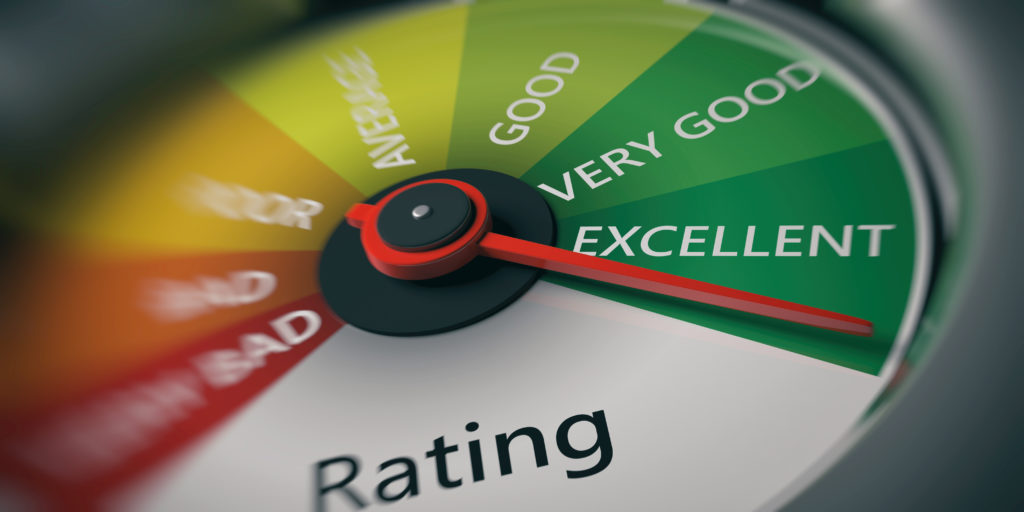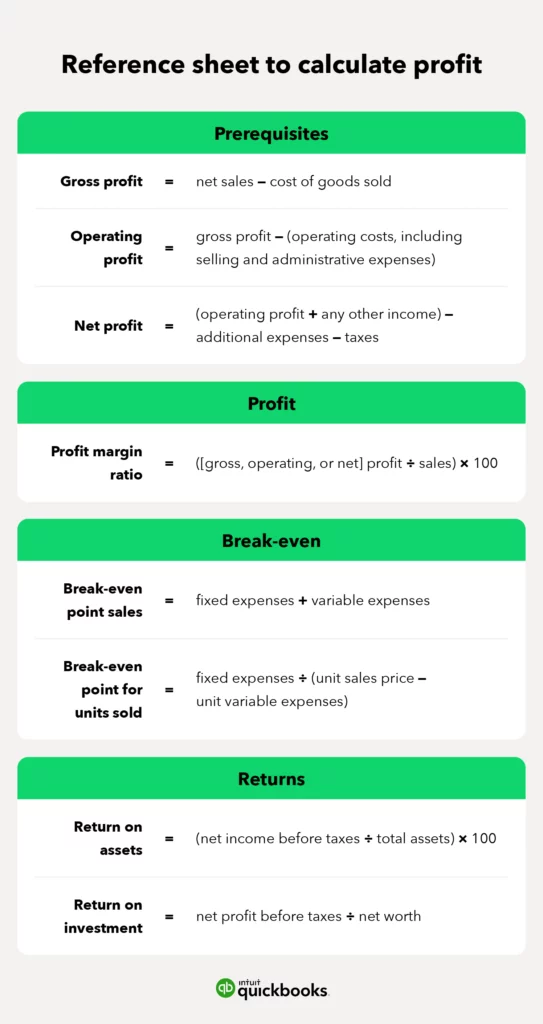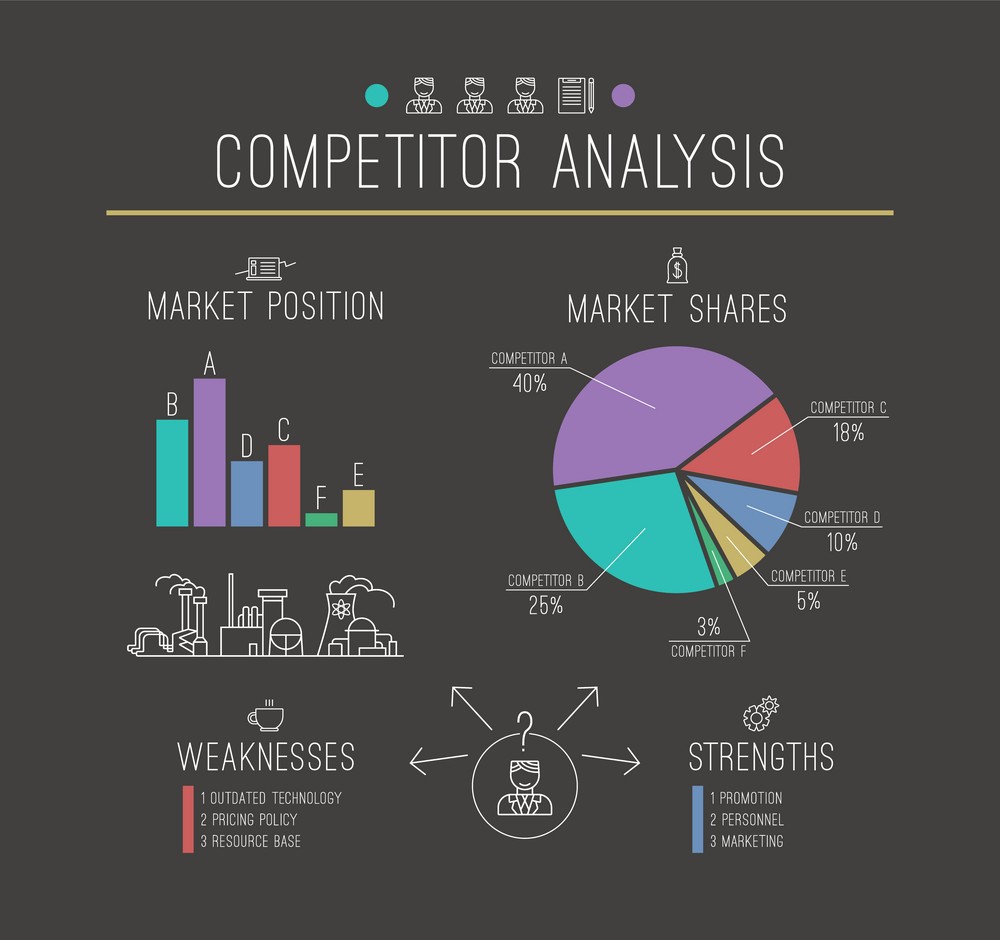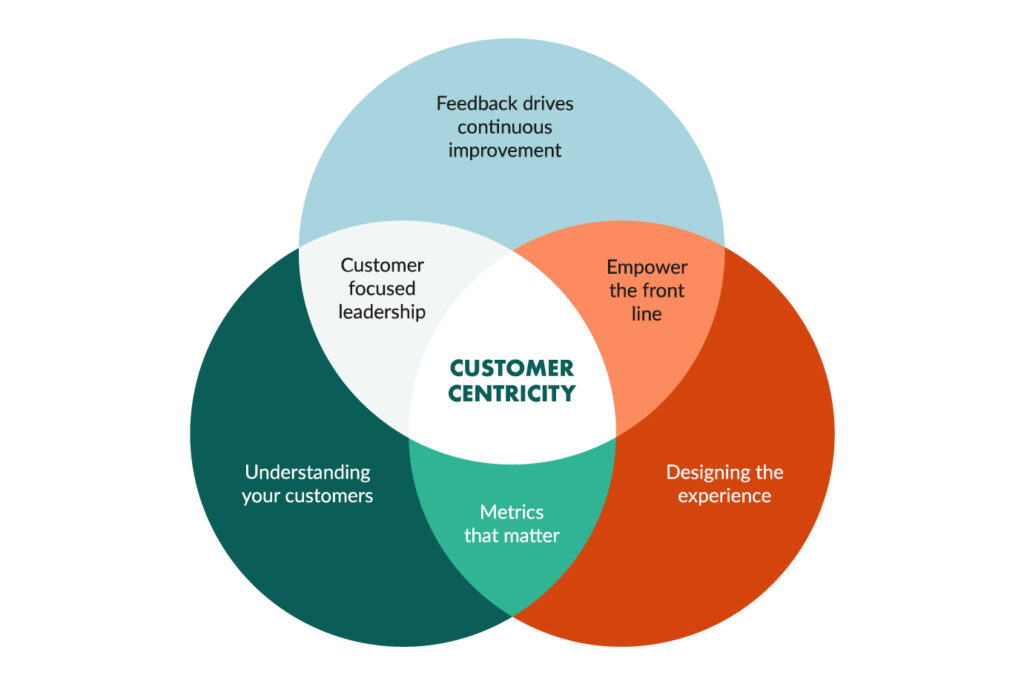The Science of Product Evaluation: Unlocking the Potential for Market Dominance

Table of Contents
Introduction
Product evaluation plays a pivotal role in unlocking the potential for market dominance. In today’s competitive business landscape, making informed decisions about which products to invest in can be the difference between success and failure. Evaluating a product requires a scientific approach that falls into various aspects, from profitability and market size to customer satisfaction and regulatory compliance.
Businesses can gain valuable insights to make precise decisions by carefully studying each element. Assessing the profitability of a product involves analyzing revenue generation and cost considerations, such as warehouse expenses, shipping expenses, packaging expenses, tariffs, and taxes. Understanding the potential market size helps identify the right target audience and allows for effective scalability. Evaluating a product’s potential to become a trend involves examining its level of innovation and ability to captivate buyers’ attention.
Moreover, analyzing competitors, satisfying customer needs, pricing strategies, shipping logistics, regulatory compliance, financial considerations, and planning for seasonal variations are all essential components of a comprehensive product evaluation process. By adopting a scientific approach to product evaluation, businesses can position themselves for market dominance and achieve sustainable growth in an ever-evolving marketplace.
Key Metrics for Product Profitability
Several key metrics need to be considered to evaluate a product’s profitability. These metrics provide insights into the financial viability of the product and its potential to generate sufficient returns on investment. Here are the essential subtopics to explore within this category:
- Revenue Generation: Analyzing the revenue potential of a product is crucial in determining its profitability. Assess the product’s target market, demand trends, and pricing strategy. Identify the estimated sales volume and revenue projections based on market research and competitor analysis.
-
Cost Considerations: Evaluate the various costs associated with the product. This includes warehouse expenses, shipping expenses, packaging expenses, tariffs, and taxes. Consider fixed costs (e.g., rent, utilities) and variable costs (e.g., raw materials, production costs). You can determine the product’s net profit margin by accurately estimating the expenses.
-
Return on Investment (ROI): ROI measures the profitability of an investment by comparing the gains (revenue) against the costs (expenses). Calculate the ROI for your product by dividing the net profit by the initial investment. A higher ROI indicates better profitability. Consider the expected timeframe for recouping the initial investment and the desired profit margins.
-
Break-Even Analysis: Conduct a break-even analysis to determine the point at which the product’s revenue equals its total costs. This analysis helps identify the minimum sales volume required to cover expenses and start generating profit. Understanding the break-even point allows you to set realistic sales targets and pricing strategies.
-
Profit Margin Assessment: Assess the profit margin for the product by calculating the percentage of profit from each sale. Consider factors such as pricing competitiveness, production costs, and market demand. Analyze if the profit margin is sufficient to cover expenses, reinvest in the business, and provide a satisfactory return.
-
Cash Flow Management: Evaluate the product’s impact on the cash flow of your business. Consider inventory management, production cycles, and payment terms with suppliers and customers. Ensure the product’s profitability aligns with your cash flow needs to maintain a healthy financial position.

Identifying the Market Scale
Market research helps determine the potential market size for a product and plays a vital role in the evaluation process. By understanding the market size, businesses can make informed decisions about their target audience, market positioning, and growth strategies. Here are the key points to expand on:
- Market Research: When you do market research, you gather and analyze data about the target market, including its demographics, preferences, behaviors, and purchasing patterns. It helps identify the market segment’s size and potential that the product aims to serve.
- Identifying Target Audience: Through market research, businesses can gain insights into their target audience’s characteristics, needs, and desires. This information helps develop a product that aligns with the target audience’s preferences and tailors marketing strategies accordingly.
- Market Size Assessment: Assessing the market size provides an estimation of the potential customer base and revenue opportunities. By understanding the market size, businesses can evaluate if it is large enough to support their growth objectives. A larger market size typically offers more opportunities for expansion and profitability.
- Competitive Landscape: Market research helps identify competitors and their offerings within the target market. Analyzing the competitive landscape enables businesses to differentiate their product and positioning to stand out from competitors. It also helps identify gaps or unmet needs in the market that the product can fulfill.
- Market Growth Potential: Market research can provide insights into the growth potential of the target market. Is the market expanding or saturated? Are there emerging trends or untapped opportunities? Understanding the growth potential helps businesses assess the long-term viability and scalability of the product.
- Market Segmentation: Market research helps identify different customer segments within the target market. By segmenting the market based on various criteria such as demographics, psychographics, or behavior, businesses can tailor their marketing efforts and product positioning to specific customer groups. This enables more effective targeting and customization of the product offering.
Positioning for Trendsetting Success
Positioning a product for trendsetting success requires carefully evaluating its innovative features and potential for creating a lasting impact on the market. By understanding the factors that contribute to trendsetting, businesses can effectively capture the attention of buyers and differentiate themselves from competitors. Here are the key points to expand on:
- Innovation and Uniqueness: Assess the product’s level of innovation and uniqueness. Does it offer something new or different from existing products in the market? Evaluate the product’s features, functionalities, design, or technology to determine its potential to stand out and create a buzz among consumers.
- Market Receptivity: Evaluate the market’s receptivity to innovative products. Research consumer trends and preferences to identify if there is a demand for novel and groundbreaking offerings. Consider factors such as shifting consumer behaviors, emerging lifestyle choices, or technological advancements that may influence market acceptance of innovative products.
- Early Adopters and Influencers: Identify and target early adopters and influencers within the market. These individuals or groups often significantly impact shaping trends and influencing consumer behavior. Engage with them to gain their support, endorsements, and testimonials to generate initial excitement and buzz around the product.
- Marketing and Branding Strategies: Develop effective marketing and branding strategies to position the product as trendsetting. Craft compelling messaging highlighting the product’s innovative features and emphasizing its unique value proposition. Leverage various marketing channels, such as social media, influencer collaborations, content marketing, or experiential campaigns, to create awareness and generate excitement.
- Consumer Engagement and Feedback: Engage with the target audience to gather feedback and insights. Conduct focus groups, surveys, or user testing to understand how consumers perceive the product’s innovation and its potential to become a trend. Incorporate consumer feedback into product improvements or iterations to enhance its trendsetting potential.
- Longevity and Adaptability: Consider the product’s potential for long-lasting impact and adaptability. Will it be relevant and desirable in the long run, or is it a short-lived fad? Evaluate if the product can evolve with changing market trends and consumer preferences, ensuring its relevance and longevity.
Competitor Analysis

Assessing the accessibility of a product from other vendors is crucial as it directly impacts the level of competition a business may face over time. Understanding the availability and ease of obtaining the product allows businesses to anticipate and strategically navigate competitive challenges. Here are the key points to expand on:
- Market Competition:
-
- Evaluate the level of competition within the market for the product.
- Identify existing vendors or sellers offering similar or substitute products.
- Consider their market presence, brand reputation, pricing strategies, and customer base.
This analysis helps determine the intensity of competition and the potential challenges in establishing a competitive advantage.
- Product Differentiation: Assess how the product can be differentiated from competitors. Identify unique selling points, features, or benefits that set it apart. Highlighting these differentiating factors can help attract customers and reduce direct competition from other vendors offering similar products.
- Supplier Relationships: Consider the relationships with suppliers or manufacturers who provide the product. Assess the exclusivity of the supplier arrangements, the availability of alternative sources, and the potential for other vendors to easily access the same product. Strong and exclusive supplier relationships can provide a competitive advantage by limiting the product’s availability to competitors.
- Distribution Channels:
-
- Evaluate the accessibility of the product through various distribution channels.
- Determine if the product is exclusively available through certain channels or if multiple vendors can easily source it.
- Consider the advantages and disadvantages of each distribution channel in terms of reach, cost, and potential competition.
- Barriers to Entry: Identify obstacles limiting the ease with which other vendors can enter the market and offer the same product. These barriers could include exclusive agreements, high capital requirements, specialized knowledge or certifications, or complex supply chain arrangements. Higher barriers to entry can provide a competitive advantage by reducing the number of potential competitors.
- Continuous Monitoring:
-
- Recognize that the accessibility of the product from other vendors may change over time.
- Monitor market dynamics, competitor activities, and industry trends to stay informed about any shifts in accessibility.
- Regularly reassess the competitive landscape and adapt strategies to maintain a competitive edge.
Customer-Centric Approach

Ensuring that a product effectively satisfies customer needs is critical to product evaluation. By evaluating the product’s features and their alignment with customer requirements, businesses can enhance customer satisfaction, and loyalty, ultimately driving sales. Here are the key points to expand on:
- Customer Needs Assessment: Thoroughly understand the target customer base’s needs, desires, and pain points. Conduct market research, surveys, focus groups, or customer interviews to gain insights into their preferences and expectations. Businesses can identify these needs to align their product features to meet or exceed customer requirements.
- Product Features Evaluation: Evaluate the product’s features to determine if they adequately address customer needs. Analyze how well the features fulfill key functionality requirements, solve customer pain points, or offer unique benefits. Consider customer feedback, usability testing, and market research data to validate the effectiveness of the product’s features.
- Differentiation and Competitive Advantage: Assess how the product’s features differentiate it from competing products in the market. Identify unique features or functionalities that provide a competitive advantage and set the product apart from alternatives. Highlight these differentiators in marketing and communication efforts to attract and engage customers.
- Continuous Improvement: Recognize the importance of continuously evaluating and improving product features based on customer feedback and evolving market trends. Monitor customer satisfaction through reviews, surveys, or support interactions to identify areas for enhancement. Regularly update and refine the product to ensure it continues to meet changing customer needs.
- Customer-Centric Design: Adopt a customer-centric approach to product design and development. Involve customers in the product development through feedback loops, user testing, and co-creation initiatives. Businesses can create products that align closely with their needs, preferences, and expectations by involving customers from the early stages.
- Customer Satisfaction Measurement: Implement mechanisms to measure and track customer satisfaction with the product. Utilize metrics such as Net Promoter Score (NPS), customer surveys, or online reviews to gather feedback. Regularly assess customer sentiment and make necessary adjustments to improve overall customer satisfaction.
Pricing Strategies and Margins
Determining the potential selling price of a product is a critical aspect of product evaluation, as it directly impacts the profitability and competitiveness of a business. By carefully assessing the pricing strategy, businesses can ensure that their product is attractive to customers and financially viable. Here are the key points to expand on:
- Competitive Pricing Analysis: Conduct a competitive analysis to understand the pricing landscape for similar products in the market. Evaluate the prices set by competitors and consider factors such as product quality, features, and brand reputation. This analysis helps determine if the product’s pricing should be aligned with or differentiated from the competition.
- Value Proposition: Assess the product’s unique value proposition and its perceived worth to customers. Consider the benefits, features, and advantages the product offers compared to alternatives. Determine if the pricing strategy should reflect the premium value of the product or focus on affordability to attract a wider customer base.
- Cost Considerations: Consider the production costs, including raw materials, manufacturing, packaging, and overhead expenses. Calculate the profit margin required to cover these costs while achieving the desired profitability. Ensure the selling price provides sufficient margin to sustain the business and reinvest in growth.
- Perceived Customer Value: Evaluate the perceived value of the product to customers. Consider the product’s quality, performance, convenience, and brand reputation. Analyze customer preferences and willingness to pay for the benefits provided by the product. Adjust the pricing strategy to align with the perceived value and affordability of the target customer base.
- Market Positioning: Determine the desired market positioning for the product based on its target audience and competitive landscape. Consider whether the product should be positioned as a premium, mid-range, or budget-friendly option. Align the pricing strategy with the chosen positioning to target the intended market segment effectively.
- Pricing Flexibility: Evaluate the potential for pricing flexibility based on market conditions and customer demand. Consider if dynamic pricing strategies, such as discounts, promotions, or bundling, can be implemented to attract customers and optimize sales.

Streamlined Shipping and Logistics
Streamlined shipping and logistics are crucial in product evaluation as they directly impact the overall cost-effectiveness and customer experience. Businesses can enhance their competitiveness and improve customer satisfaction by optimizing shipping processes and ensuring efficient logistics. Here are the key points to expand on:
- Shipping Cost Optimization: Evaluate shipping costs associated with the product. Consider package weight, dimensions, shipping distances, and delivery speed options. Explore different shipping carriers and negotiate favorable rates to minimize shipping expenses without compromising on service quality.
- Inventory Management: Efficient inventory management is vital in streamlining shipping and logistics. Evaluate the demand forecast and establish an optimized inventory level to avoid stockouts or excessive inventory. Implement inventory tracking systems and reorder points to ensure timely replenishment and minimize fulfillment delays.
- Packaging Efficiency: Assess the packaging requirements to ensure efficient and cost-effective shipping. Optimize packaging design to minimize wasted space and reduce dimensional weight charges. Use appropriate packaging materials that provide adequate protection while minimizing weight and volume.
- Shipping Speed and Options: Consider customer expectations and market requirements regarding shipping speed. Assess the feasibility and cost implications of offering various shipping options, such as standard, expedited, or international shipping. Provide customers with clear delivery timeframes and tracking information to enhance transparency and manage expectations.
- Fulfillment and Order Processing: Evaluate fulfillment processes to ensure smooth order processing and timely shipment. Streamline order management systems, inventory updates, and communication channels to minimize errors and delays. Implement efficient picking, packing, and labeling processes to expedite order fulfillment.
- International Shipping and Customs: If the product involves international shipping, familiarize yourself with customs regulations, duties, and documentation requirements. Ensure compliance with import/export laws and consider partnering with third-party logistics providers experienced in international shipping to simplify the process.
- Returns and Customer Support: Develop streamlined processes for managing returns and customer support inquiries. Provide clear return policies, efficient return shipping options, and responsive customer support channels to facilitate hassle-free returns and address customer concerns promptly.
Warranty and After-Sales Support
Warranty and after-sales support are essential to product evaluation as they contribute to customer satisfaction, trust, and loyalty. By offering reliable warranties and efficient after-sales support, businesses can instill confidence in their customers and differentiate themselves from competitors. Here are the key points to expand on:
- Warranty Coverage: Evaluate the warranty coverage offered for the product. Determine the duration and specific terms and conditions of the warranty, such as repair, replacement, or refund policies. Ensure that the warranty provides sufficient coverage to address potential defects or issues that may arise during the specified period.
- Customer Support Channels: Establish effective customer support channels to address customer inquiries, concerns, or issues. Offer multiple channels such as phone, email, live chat, or social media to provide convenient and timely assistance. Prompt and knowledgeable customer support enhances customer satisfaction and fosters positive relationships.
- Efficient Claims and Resolution Process: Develop a streamlined process for handling warranty claims and resolving customer issues. Simplify the claims procedure and ensure it is easily accessible to customers. Respond promptly to warranty claims and strive for an efficient resolution to minimize customer inconvenience.
- Transparency and Communication: Maintain transparency in warranty terms and conditions. Clearly communicate warranty coverage, exclusions, and any additional requirements to customers. Keep customers informed about the progress of their warranty claims or support requests, providing updates and resolution timelines.
- Training and Knowledge Transfer: Equip customer support teams with comprehensive training and product knowledge to effectively handle warranty claims and customer inquiries. Ensure support staff have the tools and resources to provide accurate and prompt assistance.
- Feedback and Continuous Improvement: Collect and analyze customer feedback regarding warranty and after-sales support experiences. Identify areas for improvement and implement necessary changes to enhance the overall customer support process. Review warranty policies and customer support practices regularly to adapt to changing customer needs.
Regulatory Compliance
Regulatory compliance is a critical aspect of product evaluation that ensures businesses meet legal requirements and adhere to industry standards. Understanding and complying with regulations relevant to the product helps mitigate legal risks, maintain product quality, and safeguard consumer safety. Here are the key points to expand on:
- Understanding Applicable Regulations: Thoroughly research and comprehend the regulations specific to the product and its industry. Identify relevant laws, standards, and certifications necessary for compliance. These may include product safety, labeling, packaging, health, environmental, or data protection regulations.
- Certifications and Approvals: Determine if the product requires certifications or approvals from regulatory bodies or industry-specific organizations. Understand the process, requirements, and associated costs for obtaining these certifications. Compliance with these certifications enhances credibility, customer trust, and market acceptance.
- Components and Materials Compliance: Evaluate if the product’s components, materials, or ingredients comply with regulatory restrictions and requirements. Ensure that no prohibited substances or hazardous materials are used. Verify if any specific labeling or documentation is necessary to demonstrate compliance.
- Package Compliance: Assess if the product’s packaging meets regulatory standards, such as labeling requirements, safety warnings, or disposal instructions. Ensure the package design and materials adhere to relevant regulations related to sustainability and environmental impact.
- Product Testing and Documentation: Conduct appropriate product testing to ensure compliance with relevant regulations and standards. Document the testing procedures, results, and any certifications obtained. Maintain accurate records of product compliance to demonstrate due diligence and facilitate regulatory audits if required.
- Federal, State, and International Laws: Consider federal, state, and international laws and regulations that apply to the product, depending on the target market and distribution channels. Ensure compliance with all applicable legal frameworks to avoid penalties, legal disputes, or reputational damage.
- Monitoring and Updates: Stay updated on evolving regulatory requirements and industry standards. Review and revise compliance practices regularly to align with new regulations or amendments. Establish mechanisms to monitor regulatory changes and promptly adapt product design, manufacturing, or labeling practices.
Financial Considerations
Financial considerations play a vital role in product evaluation, ensuring that the product aligns with the available budget and contributes to the business’s overall financial health. Businesses can make informed decisions regarding investment, pricing, and profitability by carefully assessing the financial aspects. Here are the key points to expand on:
- Available Budget: Evaluate the budget for product development, production, marketing, and distribution. Determine if the budget can cover the various expenses of bringing the product to market. Consider allocating funds for research and development, production costs, marketing campaigns, packaging, and other operational expenses.
- Return on Investment (ROI): Calculate the expected ROI for the product to assess its financial viability. Analyze the potential revenue generation, profit margins, and the expected timeframe for recouping the initial investment. Evaluate if the projected returns align with the desired business objectives and financial targets.
- Profitability Analysis: Conduct a comprehensive profitability analysis to determine if the product’s selling price, cost structure, and expected sales volume will generate satisfactory profit margins. Consider fixed costs, variable costs, pricing strategies, and the competitive landscape. Ensure the product’s pricing allows for sustainable profitability and contributes to overall business growth.
- Funding Options: Explore funding options if the available budget falls short. Consider external financings, such as bank loans, grants, crowdfunding, or seeking investments from venture capitalists or angel investors. Assess the potential costs, risks, and obligations of these funding sources.
- Cash Flow Management: Evaluate the impact of the product on cash flow. Consider factors such as the timing of revenue generation, production cycles, inventory management, and payment terms with suppliers and customers. Maintaining a balance between managing cash flow effectively and ensuring sufficient working capital to support the product’s development, production, and marketing activities.
- Risk Assessment: Assess the financial risks associated with the product, such as market demand uncertainty, production cost fluctuations, or unexpected expenses. Implement risk management strategies to mitigate potential financial risks and safeguard the overall financial stability of the business.
Planning for Seasonal Variations
Planning for seasonal variations is crucial in product evaluation as it allows businesses to anticipate and prepare for shifts in demand, inventory management, and marketing strategies throughout different seasons. Businesses can optimize sales, minimize inventory risks, and capitalize on peak periods by planning for seasonal fluctuations. Here are the key points to expand on:
- Demand Forecasting: Evaluate historical data, market trends, and consumer behavior to forecast seasonal demand patterns. Identify the peak seasons, slow periods, and specific events or holidays that may influence customer purchasing behavior. Accurate demand forecasting enables businesses to adjust production levels, inventory management, and marketing efforts accordingly.
- Inventory Management: Develop a robust inventory management strategy to ensure sufficient stock levels during peak seasons and prevent excess inventory during slow periods. Analyze historical sales data, consider lead times, and factor in production and delivery schedules to align inventory levels with anticipated demand. Implement just-in-time (JIT) or safety stock strategies to optimize inventory efficiency.
- Marketing and Promotions: Tailor marketing and promotional strategies to align with seasonal variations. Develop targeted campaigns, offers, and messaging that resonates with customers during specific seasons or events. Leverage digital marketing channels, social media, and email marketing to reach and engage with customers effectively.
- Sales and Pricing Strategies: Adapt sales and pricing strategies to maximize revenue during peak seasons and maintain competitiveness during slower periods. Consider dynamic pricing, bundling, or limited-time offers to capitalize on high demand. Implement strategies such as discounts or special promotions to stimulate sales during slower seasons.
- Supply Chain and Logistics: Work closely with suppliers and logistics partners to ensure timely and efficient delivery of products during peak seasons. Anticipate increased shipping demands, potential disruptions, and capacity constraints. Optimize supply chain processes, establish contingency plans, and maintain open communication channels to mitigate any supply chain challenges.
- Post-Season Planning: Develop strategies for post-season activities, such as inventory clearance, returns management, or repurposing excess stock. Plan for off-season storage, discounts, or alternative sales channels to maximize revenue and minimize inventory carrying costs.
Future Growth and Expansion
Future growth and expansion are vital considerations in product evaluation as they determine a business’s long-term success and sustainability. By evaluating opportunities for growth and developing strategic expansion plans, businesses can capitalize on market potential, increase market share, and stay ahead of competitors. Here are the key points to expand on:
- Market Research and Analysis: Conduct market research to identify potential new markets, emerging trends, and customer demands. Analyze market dynamics, customer preferences, and competitive landscapes to identify growth opportunities. Understand the market potential for the product and assess the feasibility of expansion into new markets or customer segments.
- Product Diversification: Evaluate the potential for product diversification or variations to cater to evolving customer needs. Assess if some complementary products or extensions can be developed to expand the product line. Consider market demand, production capabilities, and the alignment of new offerings with the existing brand.
- Partnerships and Alliances: Explore strategic partnerships or alliances to facilitate growth and expansion. Collaborate with complementary businesses, distributors, or retailers to expand the reach and tap into new customer bases. Identify potential synergies and mutually beneficial relationships that can enhance market penetration and brand exposure.
- Geographic Expansion: Assess the potential for geographic expansion into new regions or countries. Evaluate market demand, cultural considerations, regulatory requirements, and logistical challenges associated with entering new markets. Develop entry strategies that align with the target market and adapt to local market conditions.
- Scaling Operations: Evaluate the scalability of operations, including production capabilities, supply chain management, and distribution networks. Ensure that the infrastructure and resources are in place to support increased production and market demand as the business expands. Consider outsourcing, automation, or strategic investments to scale operations efficiently.
- Investment and Funding: Assess the financial resources required for future growth and expansion. Evaluate the need for additional funding, whether through internal resources, loans, investments, or partnerships. Develop a comprehensive financial plan to support growth initiatives and ensure adequate capital for expansion.
- Risk Management: Consider potential risks and challenges associated with growth and expansion. Identify and mitigate risks related to market volatility, competition, regulatory changes, or operational scalability. Develop contingency plans and risk management strategies to minimize potential disruptions to the business.

Question About this Topic:
The main questions for product evaluation are included here. Please study each one carefully to make a precise decision.
-
Is the product profitable?
- Will you generate enough revenue to invest and grow the business?
- Have you accounted for expenses such as warehouse, shipping, packaging, tariffs, and taxes?
-
Is the product suitable for scaling your business?
- Will it attract buyers to your store and increase sales, allowing for business expansion?
-
What is the potential market size?
- Have you conducted market research to determine the market’s size?
- A smaller market may limit your business’s growth and profitability.
-
What are the possibilities of the product becoming a trend?
- Does the product have innovative features that could make it a trend or have a lasting impact?
-
Is the product easily accessible from other vendors?
- Consider the level of competition if the product is readily available from multiple sources.
-
Does the product effectively meet customer needs?
- Are the product features sufficient to satisfy customer requirements?
-
What is the potential selling price?
- Is your product competitively priced?
- Will you earn enough margin from the selling price?
-
Is shipping the product to customers easy and cost-effective?
- Take shipping costs into account when selecting a product.
-
What warranties will you provide to buyers?
- Consider the warranties you need to offer to sell the product successfully.
-
Is the product seasonal?
- Ensure you have sufficient inventory for the entire season.
- Plan ahead for post-season considerations.
-
Do you understand the regulations applicable to the product in your country?
- Are there any necessary certifications or approvals required?
- Do the product’s components comply with local regulations?
- Does the packaging align with federal laws?
-
Is the product within your budget?
- Do you have enough funds to purchase a small quantity of inventory?
- Is the product priced appropriately for your budget?
By addressing these questions, you can comprehensively evaluate your product and make an informed decision.
Conclusion
In conclusion, product evaluation is a multifaceted process encompassing various critical factors to ensure a product’s success and market dominance. By carefully considering each aspect, businesses can make informed decisions, mitigate risks, and optimize their chances of achieving sustainable growth. From assessing profitability and market size to evaluating innovation and customer satisfaction, each element plays a crucial role in shaping the product’s trajectory in the marketplace.
Profitability analysis allows businesses to determine if the product offers a viable return on investment and if it aligns with the organization’s financial goals. Understanding the potential market size helps businesses select the right target audience and tailor their strategies for effective scalability. Identifying innovation and trendsetting potential enables businesses to differentiate themselves and capture the attention of buyers.
Customer-centric evaluations ensure that the product meets the needs and expectations of the target audience, fostering satisfaction and loyalty. Pricing strategies, shipping considerations, warranties, and regulatory compliance enhance the customer experience and build trust.
Furthermore, planning for seasonal variations, future growth, and expansion enables businesses to adapt to market dynamics, optimize resources, and capitalize on opportunities.
In summary, a comprehensive product evaluation considers profitability, market dynamics, customer satisfaction, regulatory compliance, and strategic planning. By leveraging these insights, businesses can make informed decisions, refine their product offerings, and position themselves for market dominance. Success in product evaluation requires a balance of analytical rigor, customer-centricity, and forward-thinking strategies to navigate the complexities of the marketplace and achieve long-term growth and profitability.



